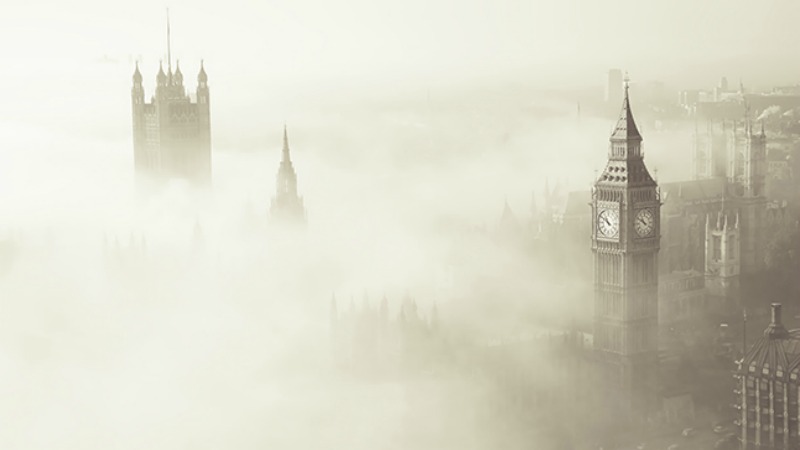In December, 1952, a dense fog descended over London, England, and suddenly people began dying. Over the course of five days, at least 4,000 people, and as many of 12,000, succumbed to breathing problems and approximately 150,000 were hospitalized. Thousands of animals also died. This disaster led to the Clean Air Act of 1956, but exactly how it happened has always been a  mystery. The first suspect was coal smoke, but how did it interact with fog to become so deadly?
mystery. The first suspect was coal smoke, but how did it interact with fog to become so deadly?
Another country with serious air pollution is China. Of the world’s 20 most polluted cities, China has 16 of them, and the capital of Beijing often exceeds acceptable air standards by many times. So it’s not surprising that a series of laboratory experiments and atmospheric measurements in that country could provide an explanation. Texas A&M University researcher Renyi Zhang has recently released a statement:
“People have known that sulfate was a big contributor to the fog, and sulfuric acid particles were formed from sulfur dioxide released by coal burning for residential use and power plants, and other means.
“But how sulfur dioxide was turned into sulfuric acid was unclear. Our results showed that this process was facilitated by nitrogen dioxide, another co-product of coal burning, and occurred initially on natural fog. Another key aspect in the conversion of sulfur dioxide to sulfate is that it produces acidic particles, which subsequently inhibits this process. Natural fog contained larger particles of several tens of micrometers in size, and the acid formed was sufficiently diluted. Evaporation of those fog particles then left smaller acidic haze particles that covered the city.”
This reaction also occurs frequently in China. Zhang said:
“The difference in China is that the haze starts from much smaller nanoparticles, and the sulfate formation process is only possible with ammonia to neutralize the particles.
“In China, sulfur dioxide is mainly emitted by power plants, nitrogen dioxide is from power plants and automobiles, and ammonia comes from fertilizer use and automobiles. Again, the right chemical processes have to interplay for the deadly haze to occur in China. Interestingly, while the London fog was highly acidic, contemporary Chinese haze is basically neutral.”
China has been working over the past decade to lessen air pollution, but the problem persists, to the point where people to wear breathing masks during much of the day. China’s explosive industrial and manufacturing growth and urbanization over the past 25 years is largely to blame.
In any event, scientists believe they have finally solved the mystery of the 1952 London killer fog. The research, published in Proceedings of the National Academy of Sciences on October 9, 2016, also suggests the same chemistry happens in China and elsewhere.
Read the original article at http://earthsky.org/human-world/team-solves-mystery-of-londons-1952-killer-fog. The photo came from that site.
